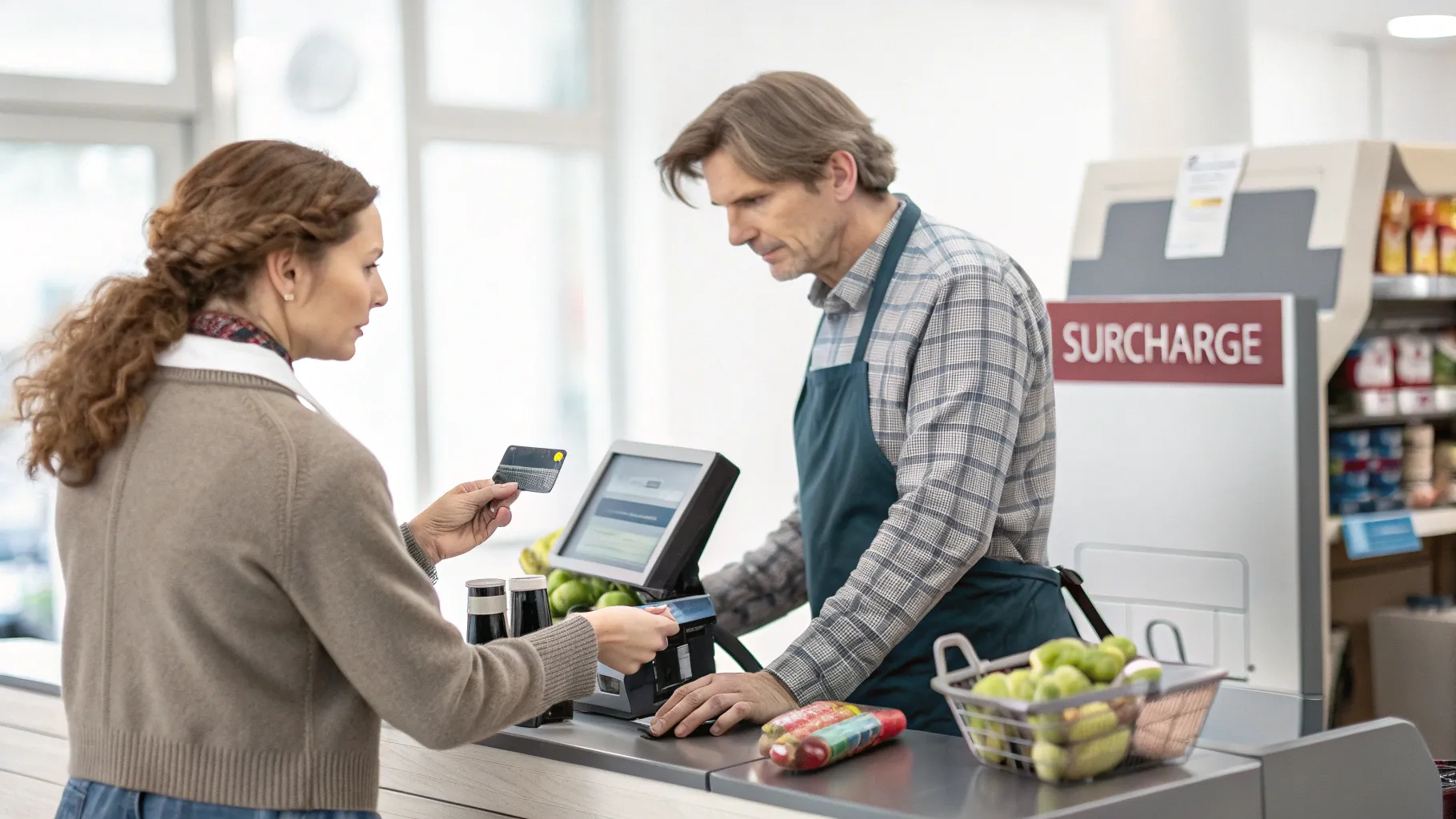Shoppers are facing more credit card surcharges at checkout, a growing practice that can wipe out cash-back or points earnings. The trend is gaining attention in stores, restaurants, and service businesses nationwide as merchants pass on processing costs. Consumers are now weighing whether card rewards still make sense for everyday purchases.
Many customers describe the add-on fees as frustrating. As one shopper put it,
“Credit card surcharges aren’t new, but they’re noticeably on the rise and can cancel out — or exceed — your cash back or points.”
The shift is reshaping how people pay and how businesses price. It is also changing the value of popular rewards strategies that rely on credit cards for nearly every expense.
Why Surcharges Are Spreading
Merchants pay a fee each time a credit card is used. Those costs vary by card network and type of card. Premium rewards cards tend to cost more for businesses to accept. As inflation and tight margins squeeze small operators, more are adding a separate line item at checkout.
Retailers say the fee helps keep posted prices steady. They argue customers who pay with cash or debit should not cover the cost of credit transactions. Consumer advocates counter that the fees can be confusing and uneven, since they appear only at the final step of a purchase.
Rules from card networks and state regulations shape how surcharges can be displayed and capped. Disclosure is key. Many rules require notices at the door, at the register, and on the receipt. Still, the presentation varies widely by business.
The Rewards Math Is Changing
For years, cardholders earned 1% to 5% back through cash-back, points, or category bonuses. A checkout surcharge can erase those gains. A 2% fee turns a 2% rewards card into a break-even deal. A higher fee leaves the shopper worse off.
That gap is most visible on large bills, like dining for groups or professional services. The bigger the ticket, the more the fee can outweigh the rewards. Many cardholders are now mixing payment methods based on the type of purchase and the merchant’s policy.
How Shoppers Can Respond
Customers still have options to protect value and avoid surprise add-ons. The most effective steps are simple and quick.
- Ask about a cash or debit price before ordering or checking out.
- Use debit or ACH for bills and services that add a credit surcharge.
- Prioritize merchants without surcharges for large purchases.
- Check wallet settings; some payments may process as debit in-store.
- Factor the fee into your rewards math before using a premium card.
- Look for posted disclosure signs and review receipts for accuracy.
In some sectors, such as gas stations, a cash discount is common. The effect is similar: two prices based on payment method. Savvy shoppers compare the net cost, not just the posted rate.
What Businesses Say
Owners interviewed across retail and dining say card fees add up. Many report thin margins since the pandemic. Labor, rent, and supplies are higher. They view surcharges as a way to keep list prices competitive while covering processing costs.
Some businesses absorb the fee on small tickets but add it on higher totals. Others apply a consistent rate and post notices at the entrance. A few offer a discount for cash. “We tried raising prices instead,” one cafe manager said. “Customers complained more about that than a clear checkout fee.”
Customer trust remains a concern. Clear signage and transparent receipts can prevent friction. Training staff to explain the policy helps, especially for first-time visitors.
What to Watch Next
Surcharge policies will likely remain uneven across stores and states. Card networks may adjust rules on caps, disclosure, and eligible transactions. More merchants could add dual pricing, with a card price and a lower cash price listed side by side.
Fintech workarounds are also growing. Some payment apps route purchases as debit when possible, reducing costs for merchants and fees for shoppers. Banks may tweak rewards or introduce targeted bonuses on merchants that do not add surcharges.
For now, the advice is simple and practical. Ask about fees before you pay, and pick the method that delivers the lowest net cost. As one customer summed it up,
“It can be aggravating, but there are a few tips on the menu to help.”
The rise of card surcharges is changing checkout habits and shrinking the value of some rewards. Expect continued adjustments by merchants and card issuers. The winners will be shoppers who compare options and choose the cheapest path at the register.





